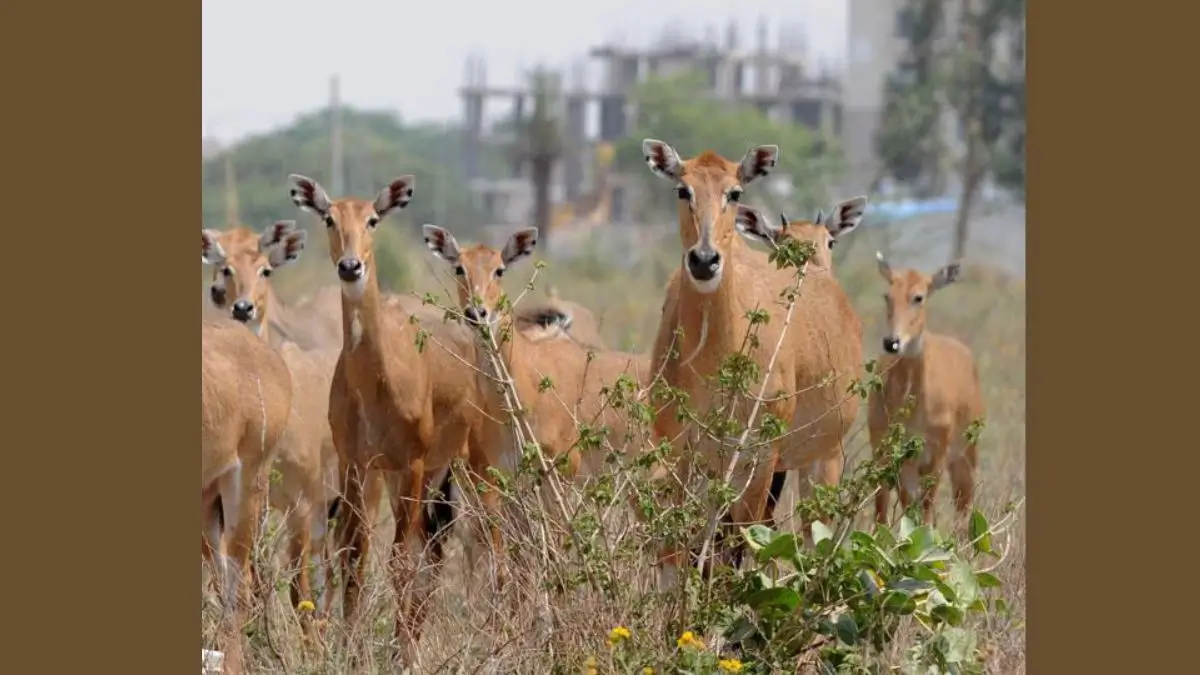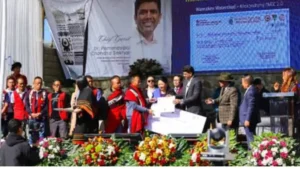The Haryana government has recently introduced new Wildlife (Protection) Rules allowing the shooting of male Nilgais, also known as blue bulls. This decision aims to address the growing human-wildlife conflict, particularly the damage Nilgais cause to agriculture. However, it has sparked protests from environmentalists and local communities, particularly the Bishnoi community, who consider Nilgais sacred. Critics argue that culling is neither ethical nor a sustainable solution to the issue.
Background of the Nilgai Controversy
- Nilgais are a vital part of Haryana’s wildlife and contribute to regional biodiversity.
- Farmers and policymakers consider their rising population a threat to agriculture.
- The government’s decision has raised ecological and ethical concerns about legally allowing Nilgai culling.
Key Facts About Nilgai (Blue Bull)
- Scientific Name: Boselaphus tragocamelus
- Native Habitat: Found in India, Nepal, and Pakistan
- Largest Asian Antelope
- Religious Significance: Considered sacred in Hinduism since the Vedic period (1500–500 BC)
- Some states suggested renaming it as ‘Rojad’ (forest antelope) to ease culling regulations.
Physical Features
- Size: 1.7–2.1 meters in length
- Weight
- Males: 109–288 kg
- Females: 100–213 kg
- Tail Length: 54 cm
- Horns: Found only in males, 15–24 cm long
Appearance
- Males: Bluish-grey color
- Females: Orange/tawny color
- Both have a sloping back, thin sturdy legs, and a white throat patch.
- Males have a distinct pendant (13 cm coarse hair below the throat).
Behavior
- Diurnal Species: Active during the day.
- Group Behavior: Lives in small groups of 3–6.
- Timid Yet Cautious: Generally tame but flees when threatened.
Human-Wildlife Conflict
- Crop Damage: Nilgais cause significant destruction to agricultural fields, making them a concern for farmers.
- Vermin Status: Bihar has classified Nilgais as vermin, allowing their legal hunting.
Conservation Status
- IUCN Status: Least Concern
- Indian Wildlife Protection Act (1972): Listed under Schedule III (protected, but not at the highest conservation priority).
Protests and Opposition
- Environmentalists strongly oppose the shooting rule, arguing that it does not address the root causes of human-wildlife conflict.
- Many believe that non-lethal methods would be more effective and ethical for managing Nilgai populations.
Proposed Alternatives to Shooting
- Translocation: Moving Nilgais to suitable habitats where they do not threaten crops.
- Habitat Restoration: Creating buffer zones with natural food sources.
- Invasive Species Control: Managing encroaching species that push Nilgais into farmlands.
- Fencing & Crop Protection: Encouraging community-led strategies to safeguard crops without harming wildlife.
Community Involvement in Wildlife Management
- Engaging local farmers and communities in conservation and crop protection.
- Setting up community reserves for Nilgais.
- Encouraging traditional farming practices to minimize human-wildlife conflicts.
Role of the Bishnoi Community
- Origin: A Hindu sect, mainly found in the Western Thar Desert and northern India.
- Founder: Guru Jambhesvara (born in 1451 AD, Peepasar, Rajasthan).
- Strict Environmental Protection: Bishnois strictly forbid harming trees and animals, making them pioneers in wildlife conservation.
- Sacrifice for Nature: Bishnois have historically given their lives to protect forests and wildlife.
| Summary/Static | Details |
| Why in the news? | Govt Approves Nilgai Culling in Haryana |
| Policy Change | Haryana government permits Nilgai shooting under new Wildlife (Protection) Rules. |
| Reason | Crop damage caused by Nilgai population growth. |
| Controversy | Environmentalists and Bishnoi community protest culling. |
| Nilgai Facts | Largest Asian antelope, sacred in Hinduism, found in India, Nepal, and Pakistan. |
| Physical Traits | Males: Bluish-grey, Females: Tawny, Males have horns (15–24 cm). |
| Behavior | Diurnal, cautious, lives in small groups. |
| Human-Wildlife Conflict | Crop destruction, declared vermin in Bihar. |
| Conservation Status | IUCN: Least Concern, WPA (1972): Schedule III. |
| Opposition | Critics argue culling is unethical and not a sustainable solution. |
| Proposed Alternatives | Translocation, habitat restoration, community reserves, crop protection. |
| Bishnoi Role | One of India’s earliest conservationist communities, strict protectors of wildlife. |



 Brookfield to Invest $1 Billion to Build...
Brookfield to Invest $1 Billion to Build...
 Nagaland Launches Mission Punarutthan Du...
Nagaland Launches Mission Punarutthan Du...
 Telangana Global Summit Secures ₹5.75 La...
Telangana Global Summit Secures ₹5.75 La...







